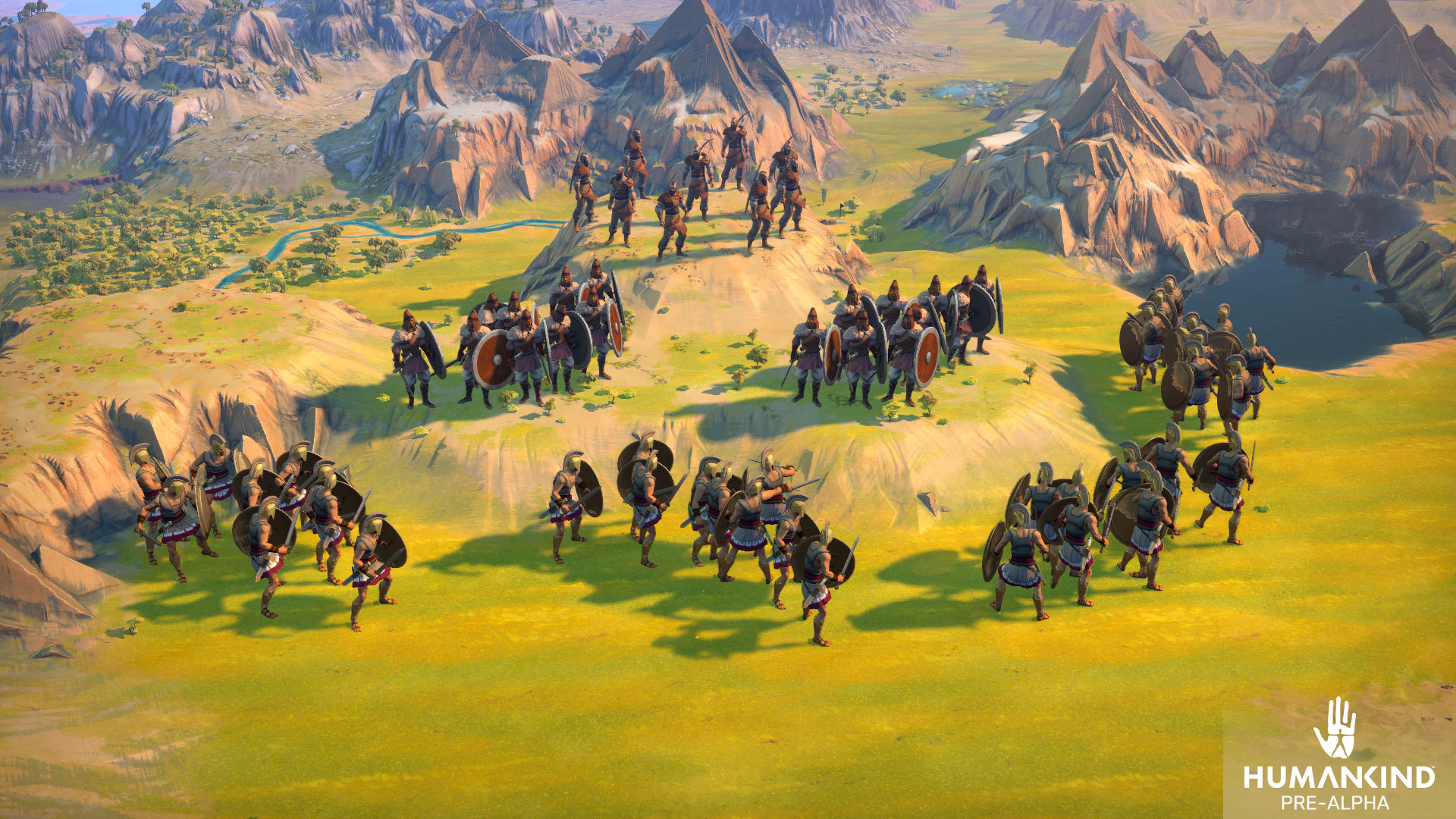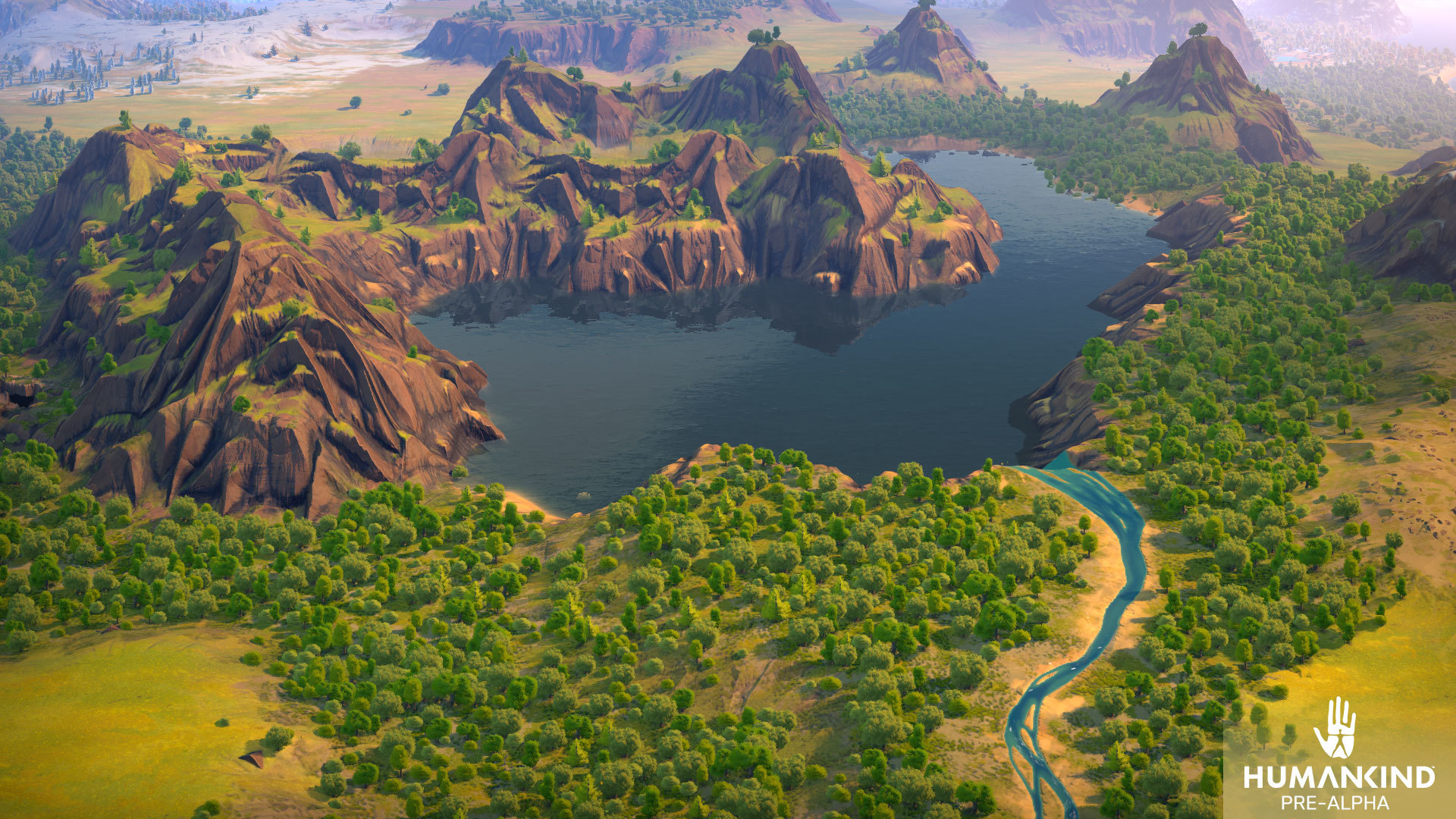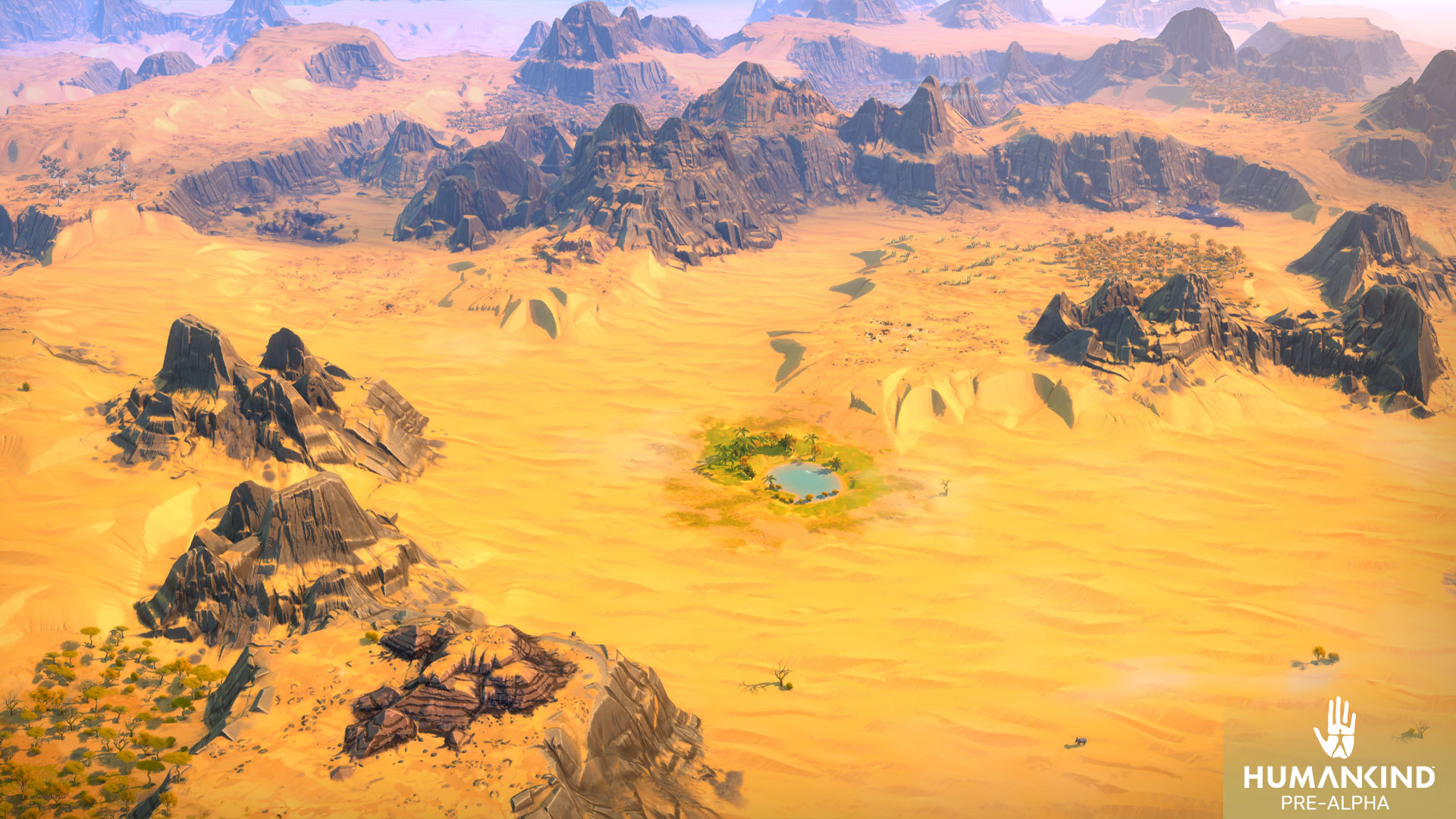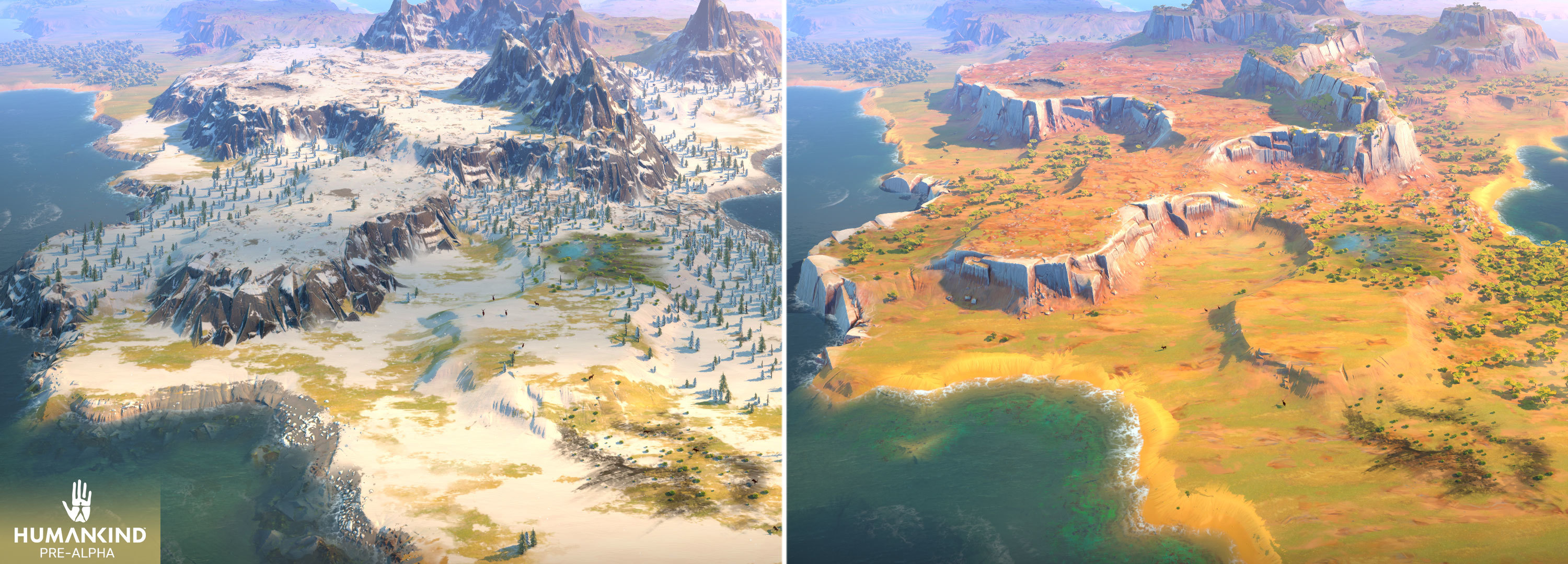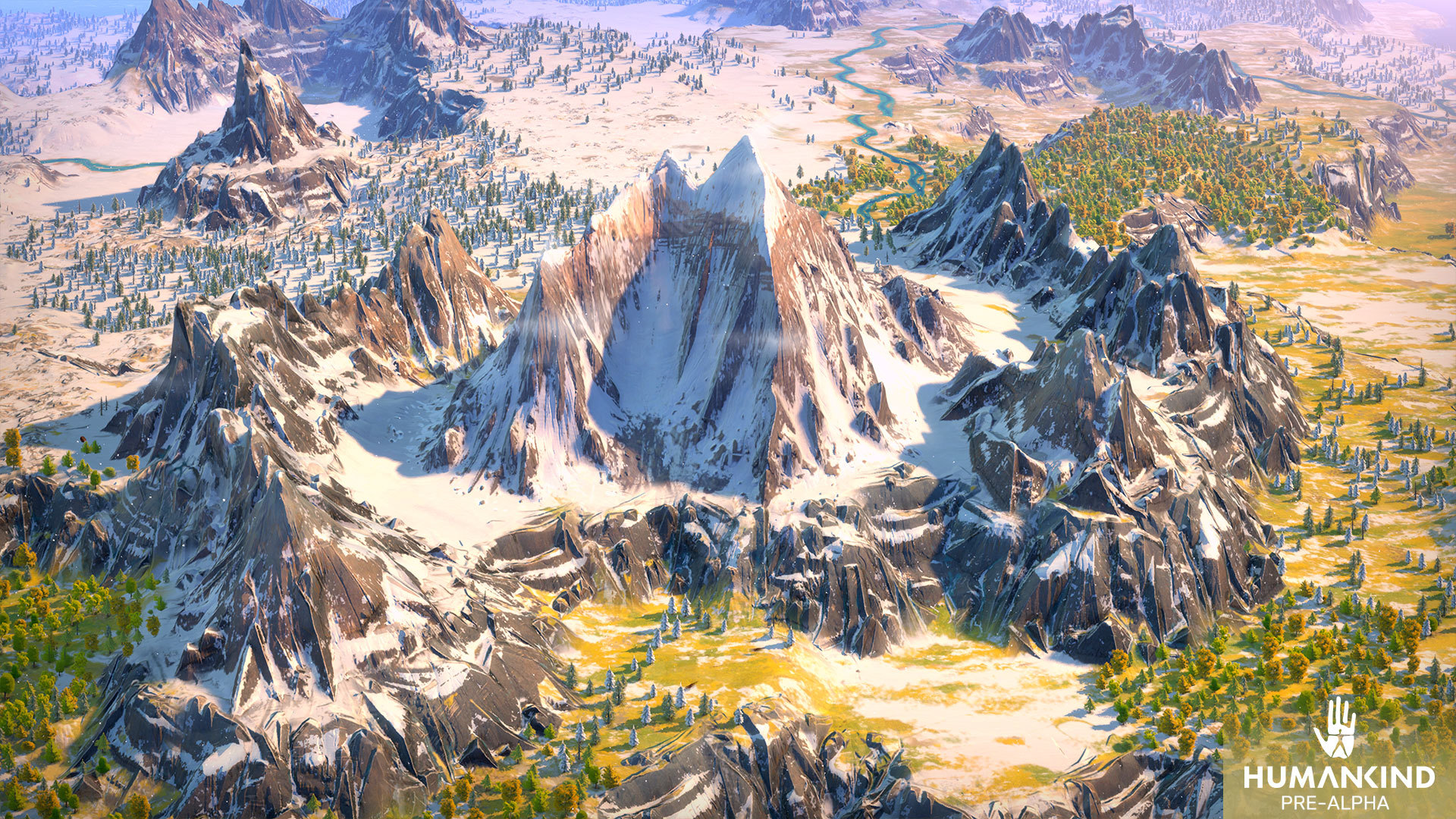
Mar 13, 2020
HUMANKIND™ - The-Cat-o-Nine-Tales
Hello everybody,
We had hinted before how we had itereted on the concept of regions and city development with Humankind, and it's finally time for us to dive into the details of Claiming Territory: Territories, Cities and Outposts, (Emblematic) Quarters, and even Wonders!
Check out the video and blog below for a closer look!
In our previous game, Endless Legend, we introduced the idea of pre-existing regions on the map. Players could claim these regions by founding a city, and expand their city within the region’s borders. We received great feedback on this, so for Humankind we decided to iterate on this idea and make regions more dynamic.
To do this, we introduced a new type of ownership. On the one hand we have cities that you can grow and develop, on the other hand we have Outposts. These outposts can be founded by any of your armies in neutral territory, and mark your claim on that territory. However, they are fragile and easily destroyed, so you will need to defend them with your armies.
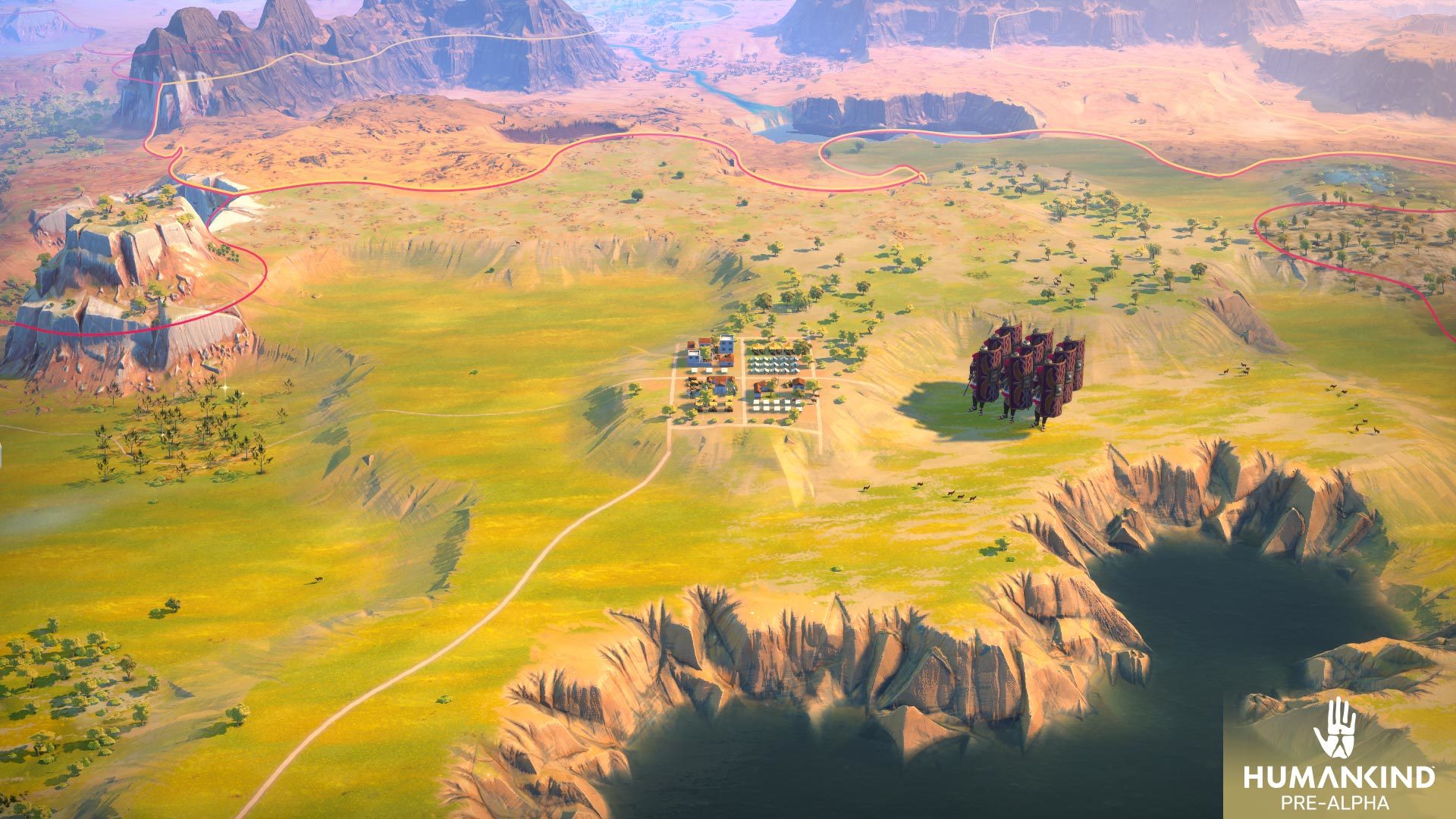
These outposts can be developed into cities by investing in them, or they can be absorbed by an existing city, merging their territory into a larger region in which to exploit resources and expand your city.

We also wanted the cities to expand across the map in a way that makes sense for the terrain around them. As a city’s population grows, you will be able to construct additional Quarters to expand the area of your city. These Quarters will exploit the resources on the tiles around them, so you will naturally want to expand your cities in ways that make sense to exploit the resources of your region efficiently. This “organic” growth of your city will lead each of your cities to have a unique shape, a sense of place.
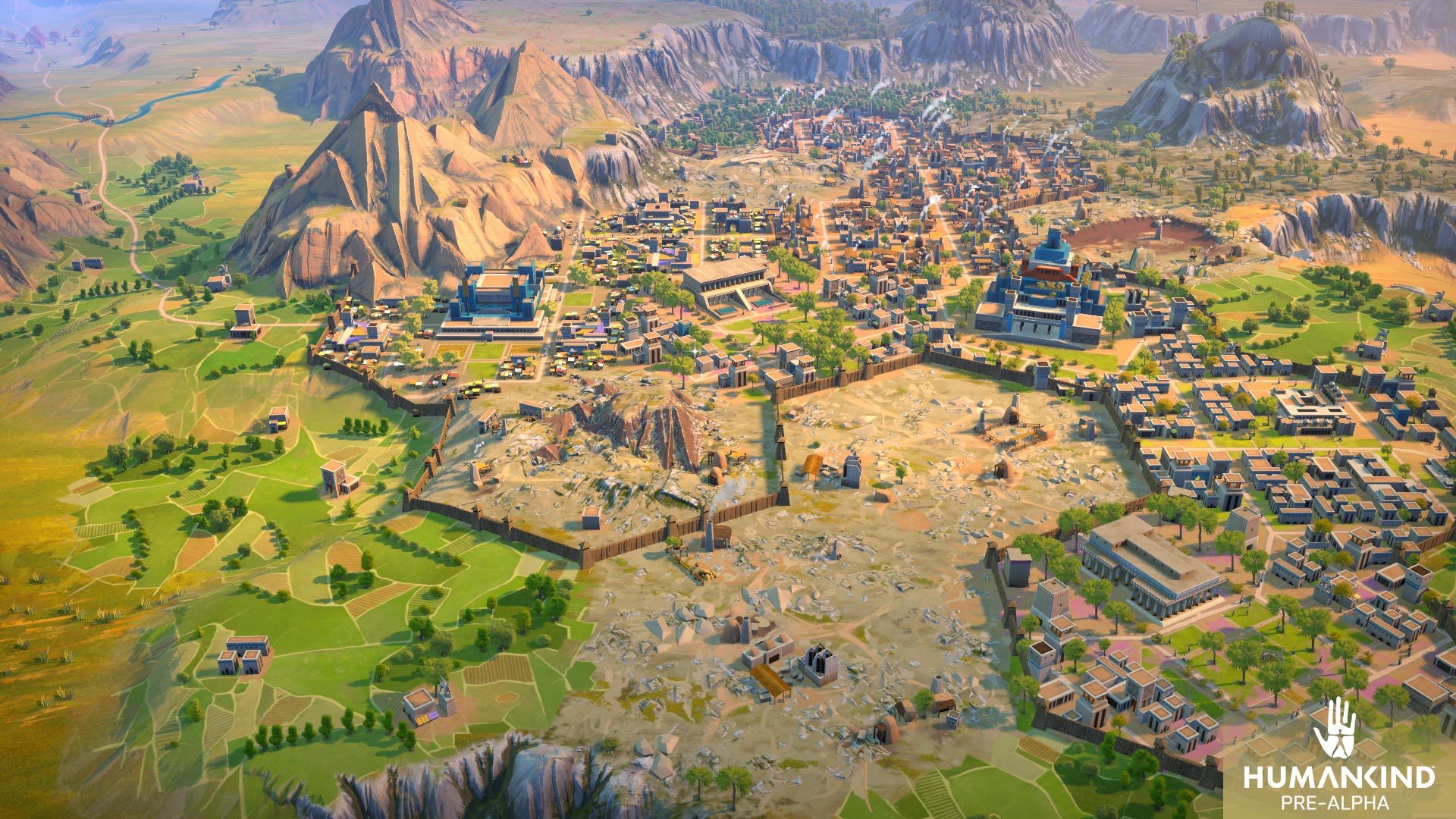
We also wanted to reflect the history of the city and the player’s civilization in the city, so we decided that certain Quarters would maintain their appearance even as players change their culture. Both city centers and Emblematic Quarters will retain their central structures even as the architecture of the other quarters around them changes. This way, you will be able to tell just from looking at a city which cultures influenced its development.

Finally, if your civilization is artistically inclined, you may be able to lay claim to a Wonder. However, these wonders are monumental projects, so you may require the contributions of more than one of your cities to build them!

We hope you enoyed this closer look at regions and cities in Humankind!
We had hinted before how we had itereted on the concept of regions and city development with Humankind, and it's finally time for us to dive into the details of Claiming Territory: Territories, Cities and Outposts, (Emblematic) Quarters, and even Wonders!
Check out the video and blog below for a closer look!
In our previous game, Endless Legend, we introduced the idea of pre-existing regions on the map. Players could claim these regions by founding a city, and expand their city within the region’s borders. We received great feedback on this, so for Humankind we decided to iterate on this idea and make regions more dynamic.
To do this, we introduced a new type of ownership. On the one hand we have cities that you can grow and develop, on the other hand we have Outposts. These outposts can be founded by any of your armies in neutral territory, and mark your claim on that territory. However, they are fragile and easily destroyed, so you will need to defend them with your armies.

These outposts can be developed into cities by investing in them, or they can be absorbed by an existing city, merging their territory into a larger region in which to exploit resources and expand your city.

We also wanted the cities to expand across the map in a way that makes sense for the terrain around them. As a city’s population grows, you will be able to construct additional Quarters to expand the area of your city. These Quarters will exploit the resources on the tiles around them, so you will naturally want to expand your cities in ways that make sense to exploit the resources of your region efficiently. This “organic” growth of your city will lead each of your cities to have a unique shape, a sense of place.

We also wanted to reflect the history of the city and the player’s civilization in the city, so we decided that certain Quarters would maintain their appearance even as players change their culture. Both city centers and Emblematic Quarters will retain their central structures even as the architecture of the other quarters around them changes. This way, you will be able to tell just from looking at a city which cultures influenced its development.

Finally, if your civilization is artistically inclined, you may be able to lay claim to a Wonder. However, these wonders are monumental projects, so you may require the contributions of more than one of your cities to build them!

We hope you enoyed this closer look at regions and cities in Humankind!





